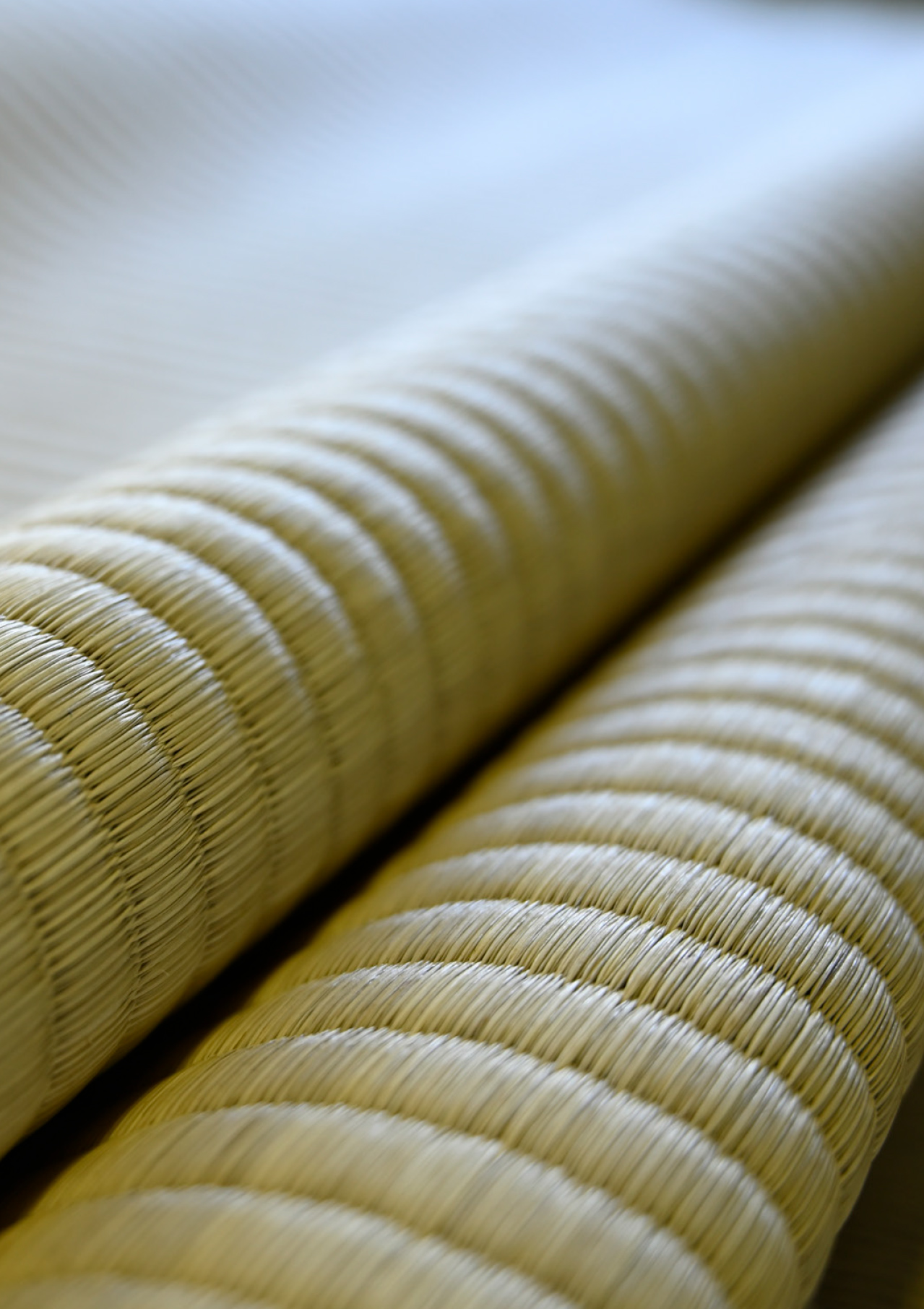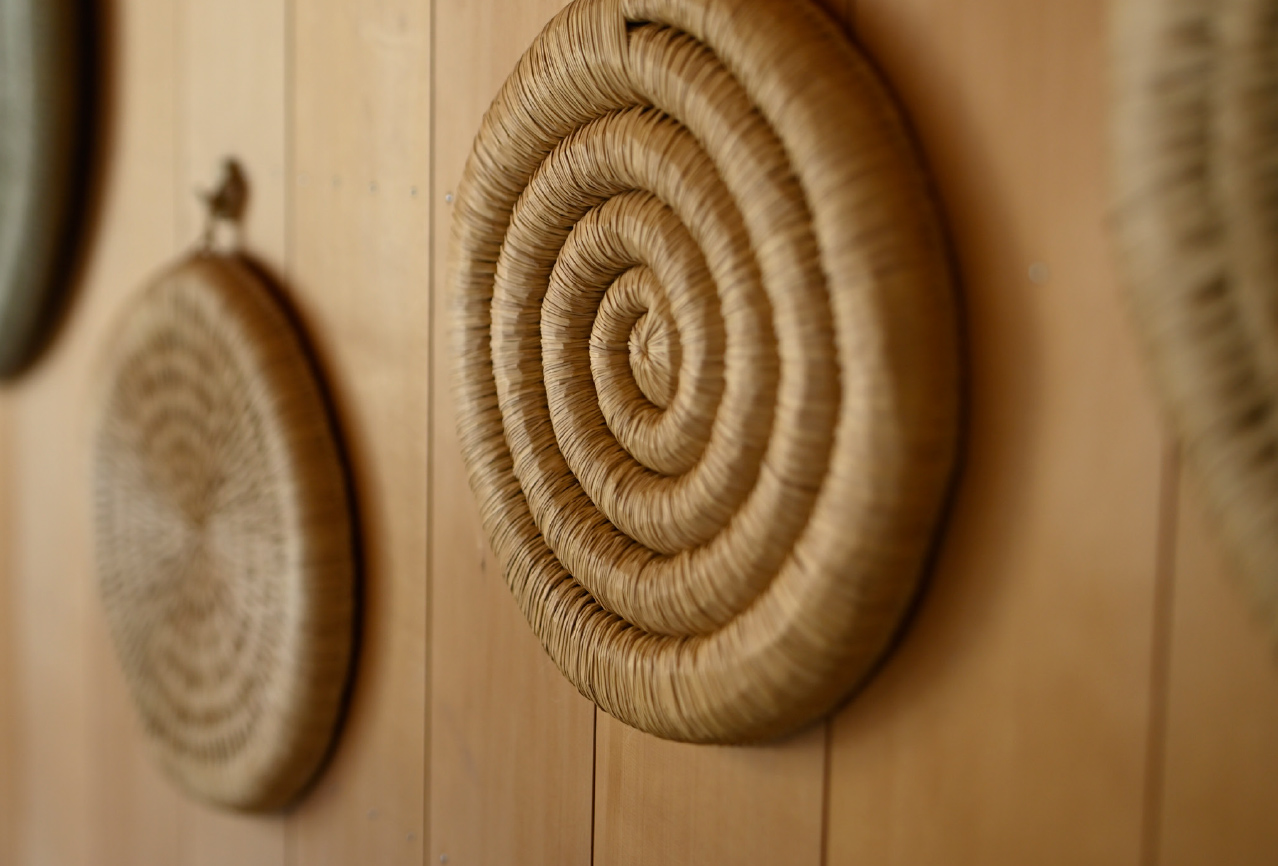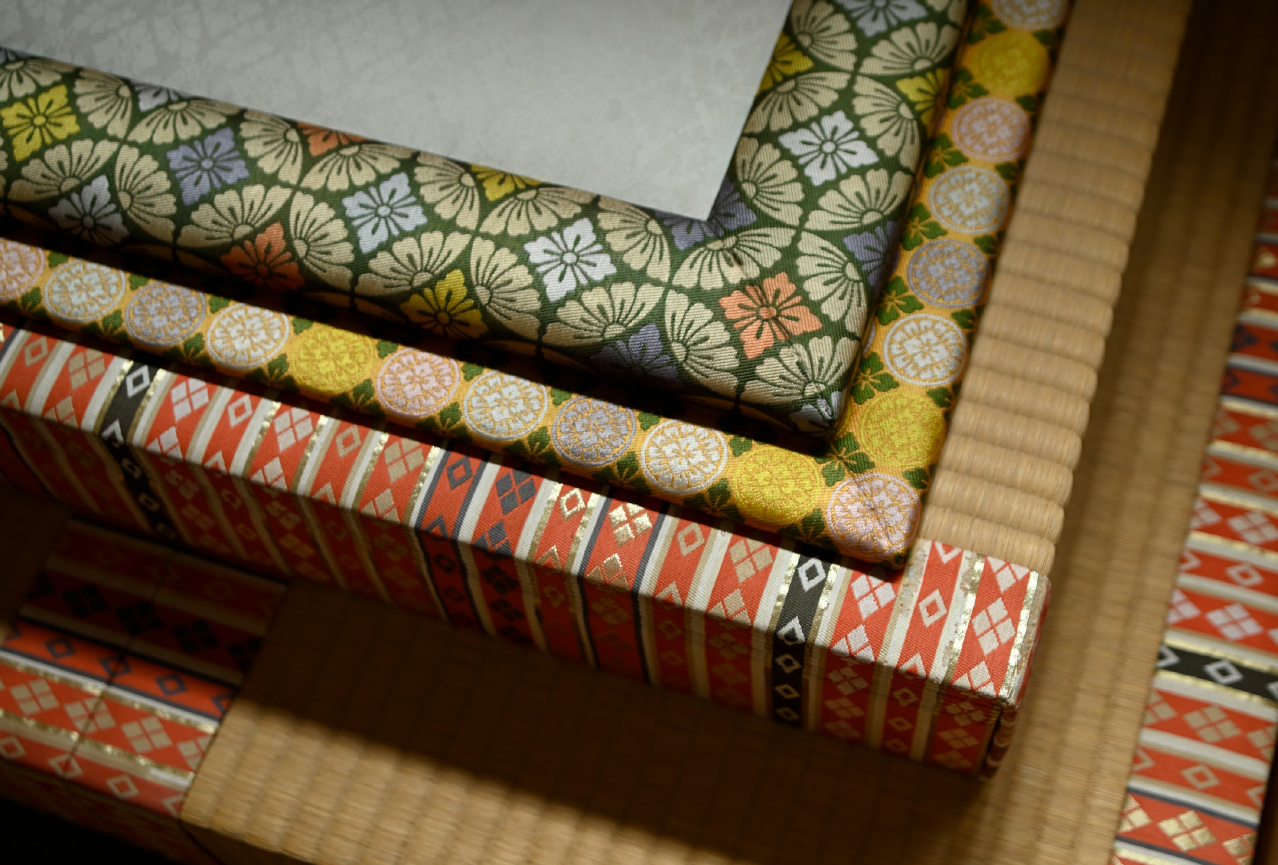京たたみ 京都畳商工協同組合
KYO-TATAMITATAMI MATS 1
1
- 手織りの畳表は、ほんの少しの不揃いが独特の陰影を生み出す。
日本文化には中国伝来のものが数多くありますが、畳は、世界に類を見ない日本固有の敷物です。奈良時代(8世紀)には原型が生まれ、平安時代(8世紀後半)に現在のような厚みのある形になり、室町時代(14世紀)に部屋全体に敷く様式となりました。畳の縁の柄と素材が、使用する人の身分や空間の格式によって決められていたことが大きな特徴で、明治時代(19世紀)まで都があり、寺社の本山や本宮、茶の湯の本家が集中する京都においてこの文化が発展し、機械化が進んだ現在も伝統的な工法を守り続けている職人がいるのは必然といえます。とくに原料のい草の美しい部分のみを使って畳表の途中で継ぎ、手織りした「中継ぎ表」を使った四つ割り仕立てという、手間がかかるため途絶えていた手法を復活させた職人も存在し、茶道家元の茶室などに納められています。畳表の美しさはそのままに、床暖房に対応した畳も開発されています。
Although many aspects of Japanese culture were influenced by China, tatami mats are indigenous to Japan. The earliest tatami dates from the Nara era (8th century), then it acquired today’s thicker shape in the Heian era (late 8th century). During the Muromachi era (14th century), tatami mats gradually came to be spread across entire rooms. The patterns and material of tatami edges were determined by the status of the space and the social standing of its user. Tatami is particularly associated with Kyoto, capital until Meiji era (19th century), and the city with the greatest concentration of historic temples, shrines and the main schools of the tea ceremony. Although tatami production has become increasingly mechanized, the skilled craftsmen of Kyoto are protecting the traditional hand-made methods. Kyoto craftsmen have even revived the time-consuming yotsuwari-shitate technique which involves hand-sewing the middle of the tatami mat using only the most beautiful part of the raw material igusa (rushes). These precious mats are used in the tea houses of the Iemoto (Grand Masters). Tatamis have also been developed for floor heating, all the while maintaining their traditional beauty.
 2
2
 3
3
- : 円座。畳表面の素材であるい草で編んだもの。
- : 畳は、縁の素材や文様によって、その空間や空間を使用する人の格や役割を表すシンボルでもある。写真は西陣織の高麗縁で、御座敷や床の間に使用される。
(1,2,3 すべて株式会社嵯峨藤本畳店)
1: The hand-woven tatamis’ slight misalignment create unique shadows. 2: Round seat. Woven with igusa, the raw material for the tatami. 3: The tatami edge symbolically changes material and pattern according to the character of the space and role of its user. The picture shows the Korai-beri edge of Nishijin woven fabric, which is used between the zashiki and the tokonoma. (1,2,3 Saga Fujimoto Tatami-ten)

